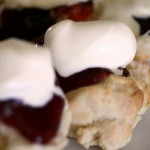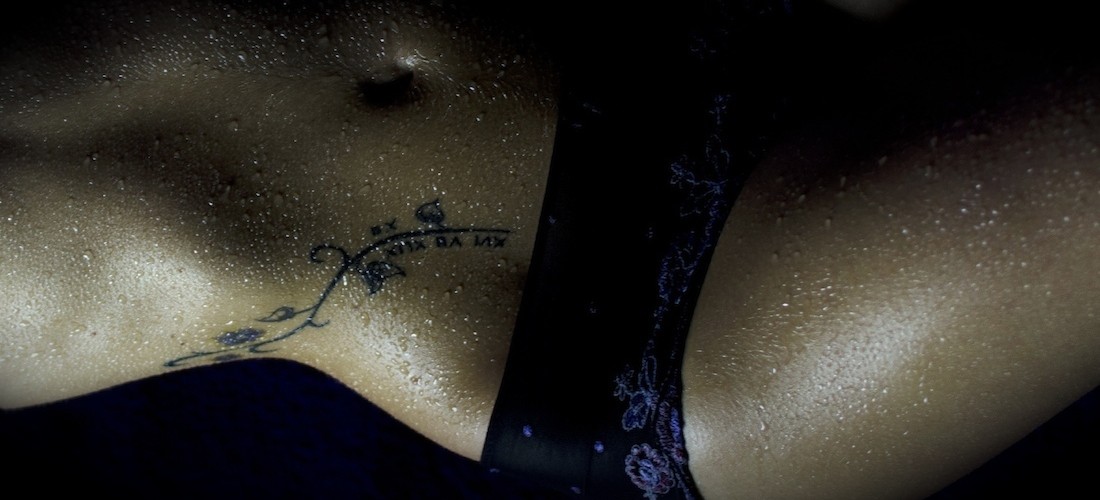Keeping with the Irish theme, I thought I’d share a few scone recipes. The first one is an interpretation of an Irish scone. The second recipe is the one I use most. Last, but not least, is a paleo almond flour variation. Try one or try them all. I like ’em all enough NOT to make them too often. Ummm, cause they go straight to my ass. 😉
“Real” Irish Scones

By: Emily
~makes about 8-10 small scones
2 cups unbleached all-purpose flour
1 tablespoon baking powder
2 teaspoons granulated sugar
1 teaspoon fine salt
3 tablespoons unsalted butter, softened to room temperature
1/2 – 3/4 cup milk, cream, or a combination
Preheat oven to 350° F. Place a baking sheet pan lined with parchment paper or a Silpat in the oven.
Sift together the flour, baking powder, sugar and salt into a mixing bowl. Use your fingertips to work the butter into the dry ingredients until the mixture just holds together.
Working the mixture as little as possible, add 1/2 cup milk and mix until it forms into a soft, slightly sticky ball. Add more milk if needed to reach desired consistency.
Place the dough on a very lightly floured work surface. Using a floured rolling pin, gently roll the dough to a 1-inch thick slab. Dip a 1-2-inch biscuit cutter in flour and cut out the individual scones, or slice the dough with a knife of the blade of a bench scraper.
Remove baking tray from the oven and arrange the scones on it. Bake 8 minutes, turn over, and bake another 4 minutes or until just barely brown.
Serve with butter, preserves, and freshly whipped cream.
If you have leftovers, reheat at 350°F for 2-3 minutes or until warmed through, or freeze by wrapping completely cooled scones in plastic wrap, then placing in a zippered bag or freezer-safe storage container. To reheat, thaw at room temperature in the plastic wrap, then unwrap and re-heat as above at 350° F.
Variations
• Herb – add a few tablespoons chopped fresh thyme, rosemary, chives or sage to the dry mixture.
• Cheese – add 1/2 cup grated cheddar or Parmesan cheese to the dry mixture. Brush the tops with beaten egg or cream and sprinkle with more grated cheese.
• Currant – add 1/2 cup currants (or raisins) to the dry mixture.
• Chocolate – increase the sugar to 2 tablespoons, add 4 ounces chopped semi-sweet or bittersweet chocolate, and sprinkle each with a pinch raw sugar before baking.
Dreamy Cream Scones
2 cups (10 ounces) unbleached all-purpose flour, preferably a low-protein brand such as Gold Medal or Pillsbury
1 tablespoon baking powder
3 tablespoons sugar
1/2 teaspoon salt
5 tablespoons chilled, unsalted butter, cut into 1/4-inch cubes
1/2 cup currants (I used dried cranberries, and chopped them into smaller bits)
1 cup heavy cream
1. Adjust oven rack to middle position and heat oven to 425°F.
2. Place flour, baking powder, sugar and salt in large bowl or work bowl of food processor fitted with steel blade. Whisk together or pulse six times.
3. If making by hand, use two knives, a pastry blender or your fingertips and quickly cut in butter until mixture resembles coarse meal, with a few slightly larger butter lumps. Stir in currants. If using food processor, remove cover and distribute butter evenly over dry ingredients. Cover and pulse 12 times, each pulse lasting 1 second. Add currants and pulse one more time. Transfer dough to large bowl.
4. Stir in heavy cream with a rubber spatula or fork until dough begins to form, about 30 seconds.
5. Transfer dough and all dry, floury bits to countertop and knead dough by hand just until it comes together into a rough, sticky ball, 5 to 10 seconds. Form scones by either a) pressing the dough into an 8-inch cake pan, then turning the dough out onto a lightly floured work surface, cutting the dough into 8 wedges with either a knife or bench scraper or b) patting the dough onto a lightly floured work surface into a 3/4-inch thick circle, cutting pieces with a biscuit cutter, and pressing remaining scraps back into another piece (what I did) and cutting until dough has been used up. (Be warned if you use this latter method, the scones that are made from the remaining scraps will be much lumpier and less pretty, but taste fine. As in, I understand why they suggested the first method.)
6. Place rounds or wedges on ungreased baking sheet and bake until scone tops are light brown, 12 to 15 minutes. Cool on wire rack for at least 10 minutes. Serve warm or at room temperature.
*sometimes I add strawberries and cream cheese
Paleo Almond Scones
2 cups blanched almond flour
⅓ cup arrowroot flour
½ teaspoon sea salt
2 teaspoons baking powder
2 Tablespoons pure maple syrup
½ teaspoon pure almond extract
¼ teaspoon pure vanilla extract
1 large egg
¼ cup melted organic coconut oil
¼ cup raw, slivered almond pieces
Instructions
Preheat oven to 350F. Line a baking sheet with a Silpat or parchment paper. Combine almond flour, arrowroot flour, salt and baking powder in a large mixing bowl. If there are any lumps in the almond flour, use a fork to break them up.
In the bowl of a stand mixer or another large mixing bowl, combine maple syrup, almond and vanilla extract with the egg.
Turn on mixer and slowly pour in melted coconut oil until well combined. (If using a hand mixer, begin beating mixture and slowly pour in melted coconut oil.)
Pour the liquid mixture into the flour and mix until well combined.
Finally, stir in the slivered almond pieces until mixed throughout. Use your hands to form the dough into a ball. Place on baking sheet and gently press down to flatten.
Cut into eight triangles and bake for 20 to 25 minutes (I had to bake until 25 minutes to get nice brown edges) or until edges are nice and brown but not burnt. Remove and cool completely on a wire cooling rack.










